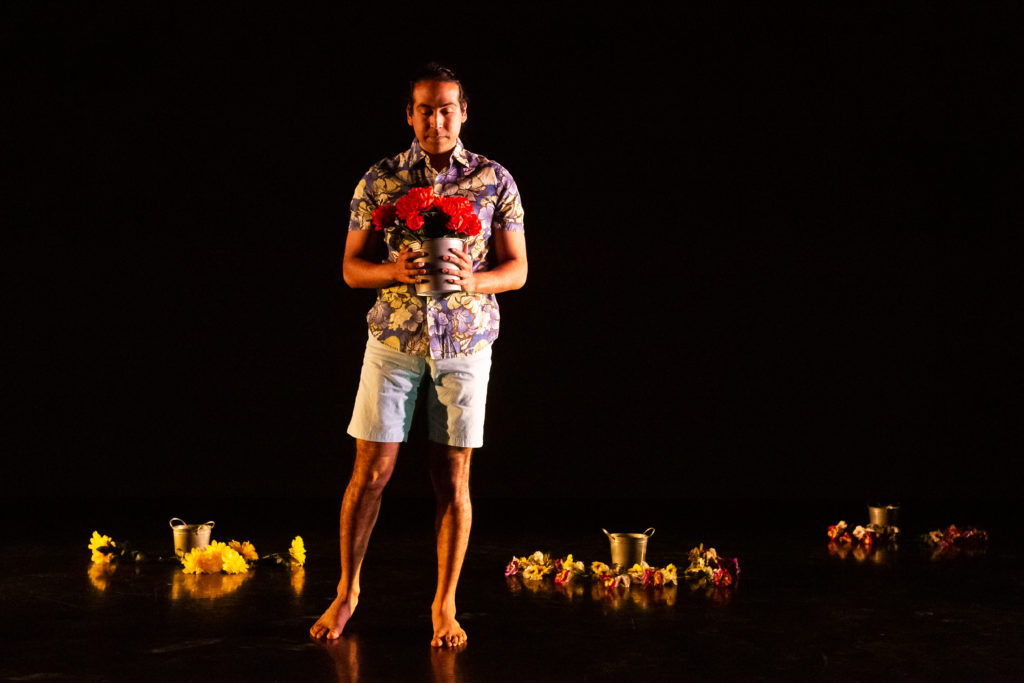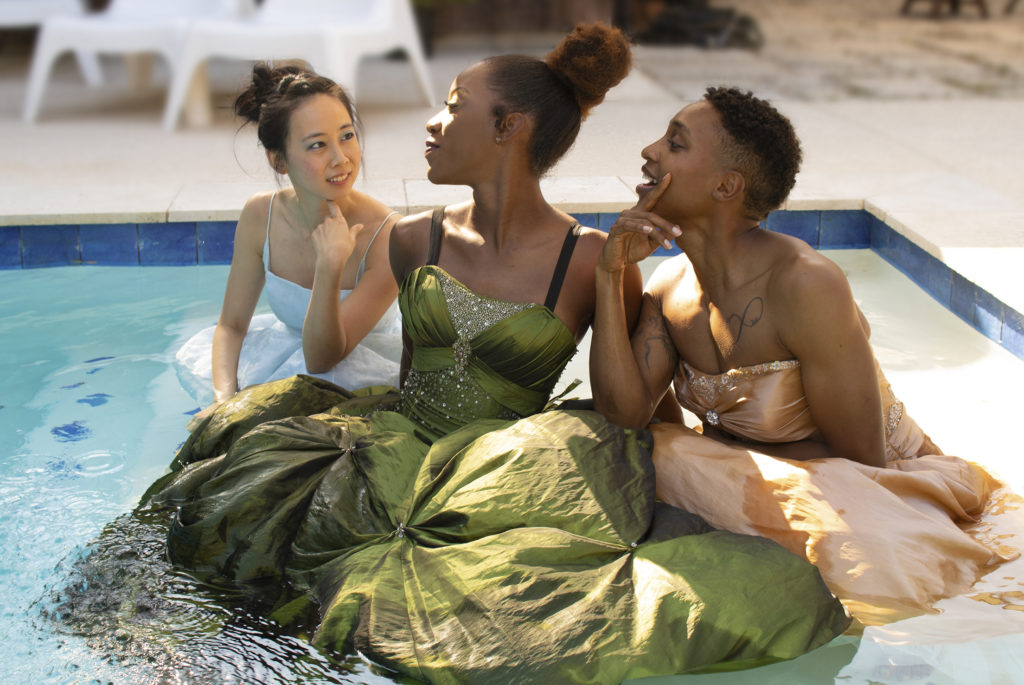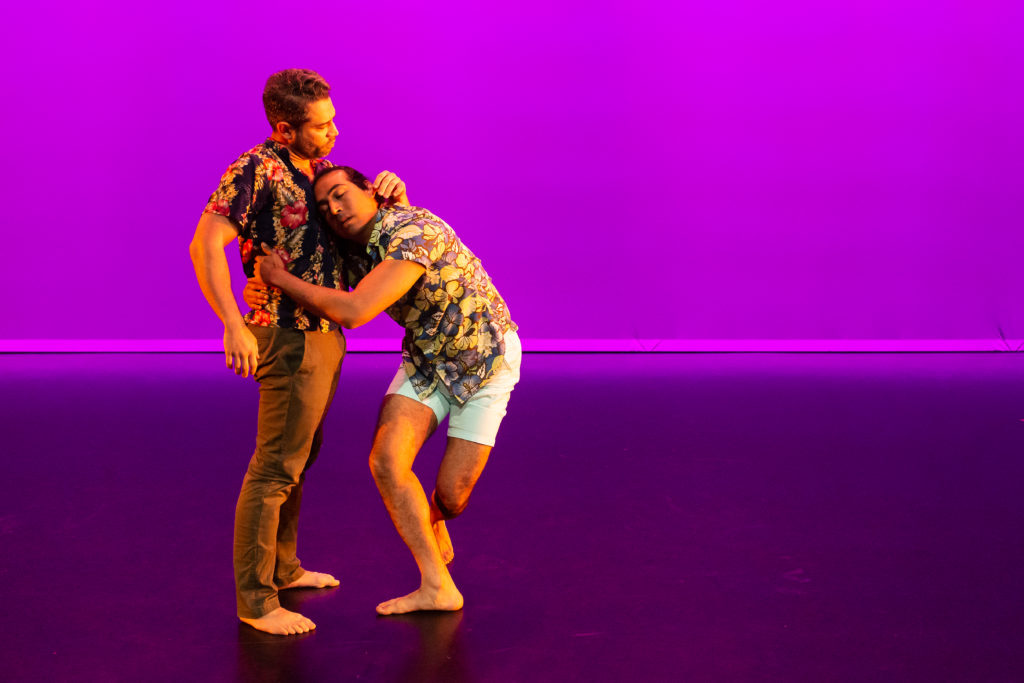
The Pilot Dance Project’s ‘Lazarus in the Promised Land’ Premieres November 6
Executive director Adam Castañeda talks navigating the show's experimental modern dance.

Houston born and raised, dancer and choreographer Adam Castañeda is bringing a new dance work to life—one that draws on his personal history while furthering the vision of the dance company he directs.
Since 2017, Castañeda has been the executive director for The Pilot Dance Project. Previously known as FrenetiCore Dance, the name and direction of the company changed when he took over from Rivkah French, who favored a more multimedia, narrative-driven aesthetic with projections and voice-over text. Castañeda had a different vision.
“I’d always fantasized about dancing for a company that had a rotating roster of choreographers,” Castañeda says. “The company would do a deep dive into the choreographers’ vision, their process, and ultimately their final product.” He saw his new position as an opportunity to make this dream come true. Starting with two established local choreographers, jhon r. stronks and Ashley Horn, The Pilot Dance Project has gone on to present several other artists’ works as well as Castañeda’s own choreography.
The dream began to shift in 2019 as he became more interested in community building. “We live in the age of social media, where we’re all connected but also isolated at the same time,” he says. “Once you’re of a certain age [with certain] people in your orbit, that’s your orbit. There’s not that much room for meeting new people and diving into new communities. So I thought about creating dance works that would create these communities, which would consist of people of all different experience levels, all different dance abilities, all different interests in dance.”
Taking advantage of a residency provided by Dance Source Houston and Houston Ballet, Castañeda created his first dance work under this vision for one of Dance Source’s “Mind the Gap” programs. Called The Flower Garden of Ignatius Beltran, Castañeda got positive feedback from audiences and cast alike, and he felt energized to pursue his community-building direction.

The very next month, everything shut down due to the pandemic. Slowed down but not deterred, Castañeda used that time to deepen some relationships in the dance community and (like so many other performing-arts organizations) dabble in the world of online presentations.
“I was definitely in experimental mode. We did our best to do the online thing. We produced a digital concert in December of 2020 and I premiered my Latinx Festival digitally in March. But I’ll be honest, I don’t think I did that well,” Castañeda admits. “For one, we didn’t find an audience for buying a digital concert and then viewing it. Then I realized I just don’t have the time or the capacity to learn these new digital skills to be a dance-for-camera filmmaker.”
The focus returned to live performance, starting with an outdoor performance on the grounds of the Live Oak Friends Meeting House, Tether was choreographed by Ashley Horn, with a prologue choreographed by Castañeda, who again used his “community works” approach.
The Pilot project will continue to engage independent choreographers, mostly people who have not incorporated their own nonprofit company. “I will say that The Pilot does have a very distinctive aesthetic, in my opinion. All the choreographers are working from a very humanist place. The choreographers I commission do abstract movement for movement’s sake. They’re all driven by their individual lived experiences. That’s what I’m drawn to, first and foremost.” He explains further, “I am drawn to a full-bodied modern or postmodern dance vocabulary. We very much do modern experimental work.”
The upcoming November production from The Pilot Dance Project will feature Castañeda’s choreography, which is again incorporating both highly trained and less-experienced dancers. Called Lazarus in the Promised Land, the original impetus for the show was the immigration stories of his grandparents, who came from Mexico City and Monterey. As the ideas developed, he realized what he really wanted to investigate was the way his grandparents’ Jehovah’s Witness religion affected his whole family. It is a faith that Castañeda left ten years ago, but still finds remnants of in his life.

While he has his critiques of that religion, he didn’t want that criticism to be the center of this work. “I don’t want to sound clichéd, but I wanted to focus on the beauty of their lives, which they built around this religion. It’s taken a much softer shape.”
Still, there was some emotional history to sort through. While the grandparents Castañeda loved found that religion beneficial for their lives, he found it damaging after 25 years. “These were the cards I was dealt, and I made the most of them,” he says. In that very closed culture, where marriage and even friendship outside the faith is strongly discouraged (if not forbidden), he had to figure out how to move in circles beyond those restrictivewalls. “I’m still very much a kid operating in the world in a lot of ways. I still have a lot to figure out.” He admits to holding resentments for a time, but he has worked through a lot of that thanks to “a good dose of therapy and reflection.”
Castañeda now feels that this show is tying something up for him. “I think it’s going to be okay. I know that sounds weird to say as an adult, but for a long time, it just didn’t seem like it was. This show is me telling myself that I survived, it’s okay, and I think I’m going to make it.”
Castañeda expresses self-awareness of himself as a gay dance maker. “I think if you look at my aesthetic, my sensibilities, my movement vocabulary, it’s not really what you would expect from a male dancer who is six-feet-two and 185 pounds.” He thinks of his work as an expression of “the feminine divine.” “There is a very obvious masculine presence that I think I can project on stage, but left to my own devices, I do create dances that are very soft and gentle. All my movement is dressed in florals and bright colors. If I do cast a male dancer, they have to be able to do my movement without butching it up.”
Castañeda often appears onstage in what would be considered women’s clothing, but without doing what would traditionally be considered drag. “If the female spirit is calling me to wear a dress in a performance, I’m going to wear a dress,” he says. “Why is my sort of build inaccessible to a dress? If it fits me and I can tailor it, why can’t I wear it?”
What: Lazarus in the Promised Land
When: November 6 and 7
Where: The Storyhive, 4010 Canal Street
Tickets: pilotdanceproject.org











FB Comments